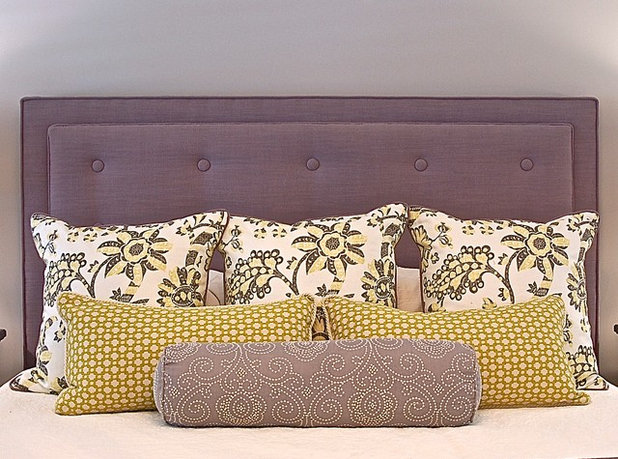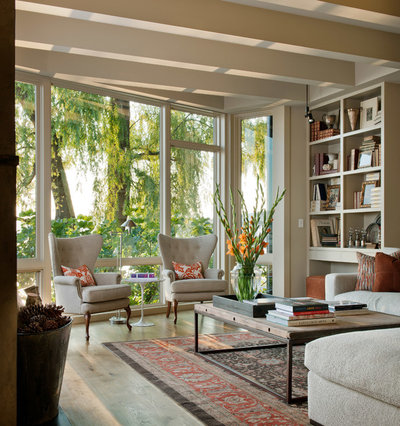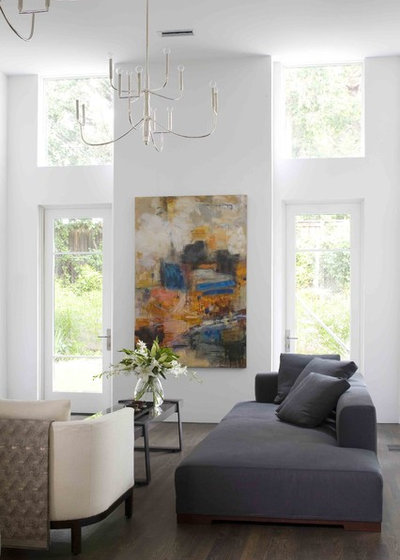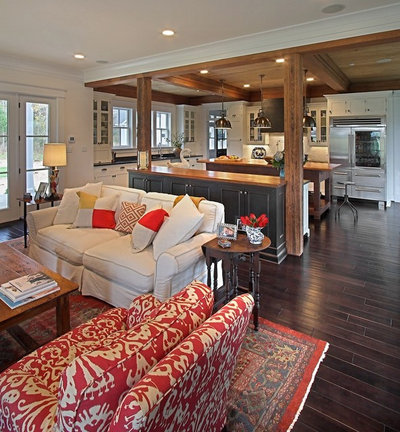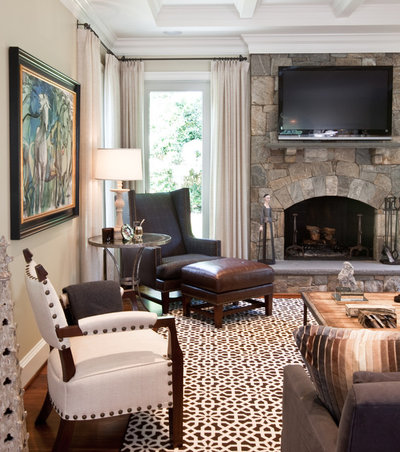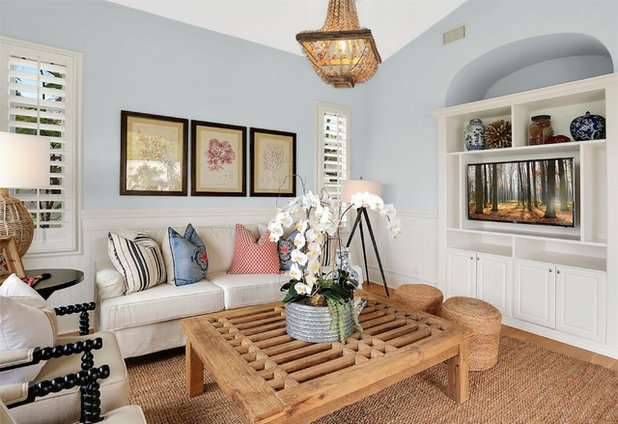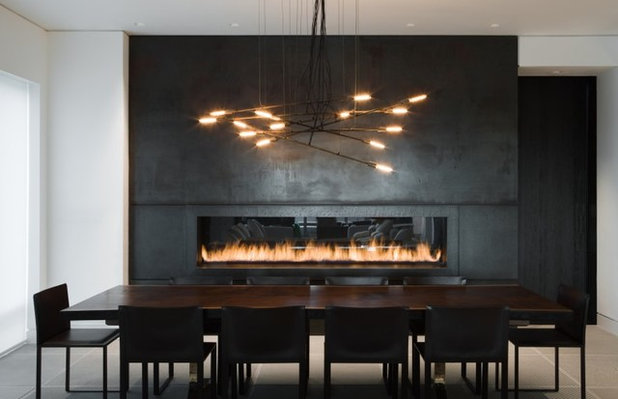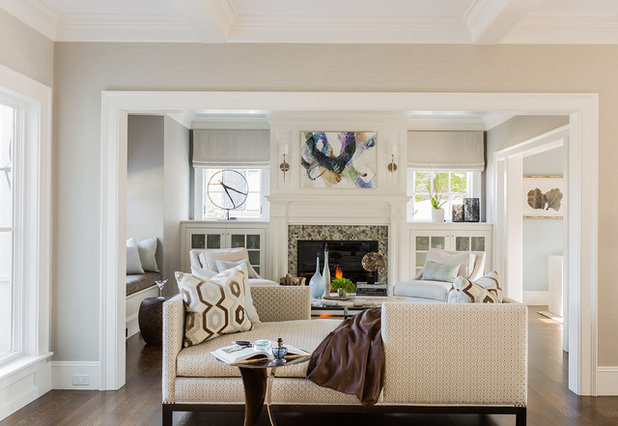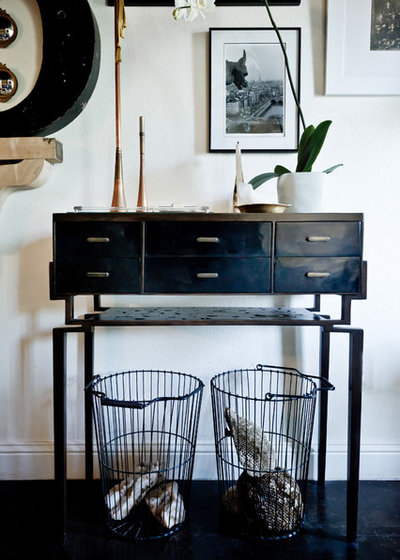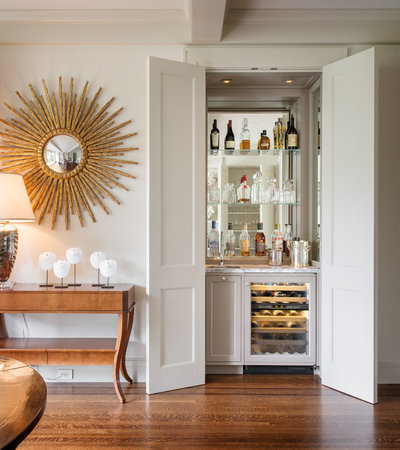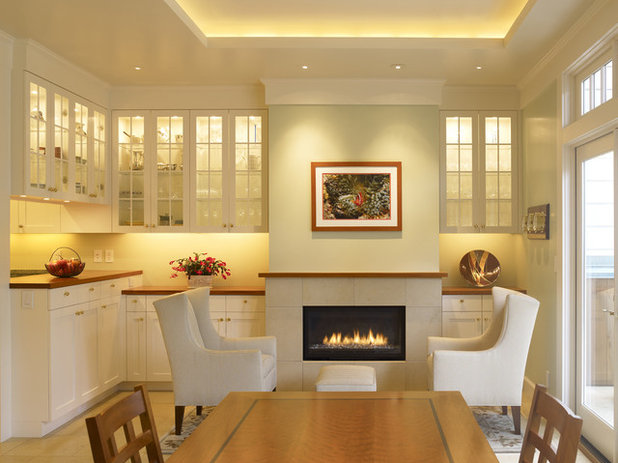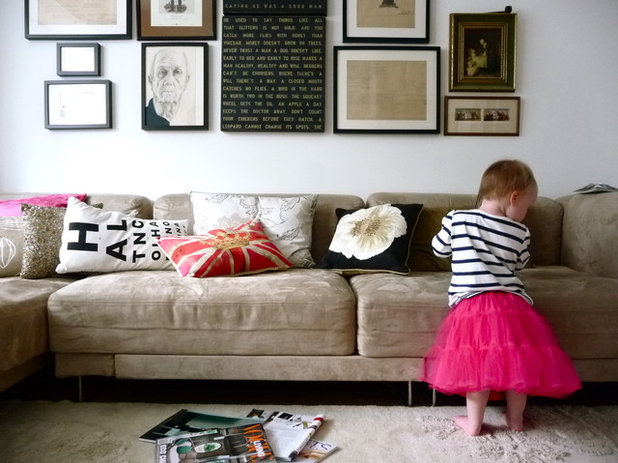1. Pick the paint color last. I get calls all the time from homeowners who want to pick a paint color before they move in. I get the logic. Why not arrive to walls with a fresh coat of paint? Of course you can do it this way, but in my opinion it’s not ideal.
There are thousands of paint colors with various tints, tones and shades. And each one looks different from home to home, because light sources vary, meaning what looks good in your current home might not in your new one. You want the color that best complements your upholstery, artwork, rug and whatever else. You can pick that color only if your stuff is actually inside your home.
3. Hang artwork at the right height. Galleries and museums hang artwork so that the midline (center) of each piece is 57 inches to 60 inches from the floor. (The average human eye level is 57 inches.) And you should do the same.
In a room like this, where the ceilings soar, there might be a tendency to hang the art higher. But remember: It needs to relate to human scale, not the structure’s scale.
If you’re not sure, take a picture. It’s remarkable how much a photo can reveal. Print it out or use Photoshop or an app to draw on the photo. This can give you a sense of whether a larger or smaller piece of art is needed or a tall plant might be best to fill a vacant spot.
4. Know how to arrange furniture on a rug. There are basically three ways you can arrange furniture on your rug.
All on: The rug is large enough to place all of the furniture legs on top of it. This creates a more luxurious feel. For this, bigger is better. Just be sure to leave at least 12 to 18 inches of floor surface on all four sides of the rug’s borders.
All off: If you have a small room, keeping all legs off the rug is a great cost-effective choice. You don’t want to pick too small a rug, though, or it may look insignificant, like an afterthought. The rug should appear as though it could touch the front legs of each of the seating pieces. This approach is best suited when you’re layering a pattern over a larger solid or textured rug.
6. Create a focal point. There are leading roles and supporting cast members in any production. The same holds true in design. Choose your star and make it the focal point to anchor a room. Allow other items to take a secondary role. Don’t ask everything to have a leading role; it will just result in visual noise.
Your focal point might be a dramatic hood in the kitchen, a mantel and art piece in the living room or a headboard in the bedroom. Whatever it is, choose something that will draw attention. In this room the fireplace and the lighting work together as a collective focal point, bringing your eye right to the center of the composition and anchoring it there.
8. Edit your collectibles.Don’t hang on to a piece that just doesn’t fit. I don’t care if your great-aunt Sally gave it to you. If it’s not working for you, then find a new home for it (maybe in a different room).
The unifying theme here is the use of black in the utilitarian pieces. The balance is almost perfect. It reminds me of somethingCoco Chanel said about accessorizing: “Before you leave the house, look in the mirror and take one thing off.” In design, know when to stop.
9. Vary the scale. What looks good in the store may look like an elephant in the room when you bring it home. Or it’s too tiny to be of any significance. So always vary scale and proportion.
The oversize sunburst mirror frame fills up the wall space nicely here, while the sand dollars make an interesting grouping below. They would be much too insignificant individually. Threes and fives make for more pleasing arrangements than even numbers.
10. Add layers of lighting. In this kitchen seating area, the backsplash is lit, the artwork is highlighted and the cabinet interiors are filled with light. One central lighting fixture would not have had nearly the same dramatic result.
Professionals build layers of lighting to create interest, intrigue and variety. In a room where everything is lit evenly, nothing stands out. Pick a focal point and perhaps a secondary focal point and highlight those. Add general ambient lighting and some lower lighting, like table lamps, for interest.
11. Be bold. Personality is what makes a space great. Make your own statement and have fun. The more you try, the more you will begin to see what works and what doesn’t.
Incorporate unexpected elements for drama. The unconventional ottoman seats, library-style bookshelves and oversize chandelier here are all unexpected in a conventional living room, but the result has charisma. Eschew expected pieces and interpretations if you want a room that will really wow.
12. Ignore all principles in favor of creativity. Having some guidelines gives people a good starting point for furnishing and decorating their home, even if some of them aren’t practical for a particular space.
Go with something personal that makes you smile and, above all, is comfortable. Overly designed rooms don’t really translate in modern life. A pillow collection and an art arrangement that are seemingly haphazard, as shown here, create a dressed-down look with plenty of style.

